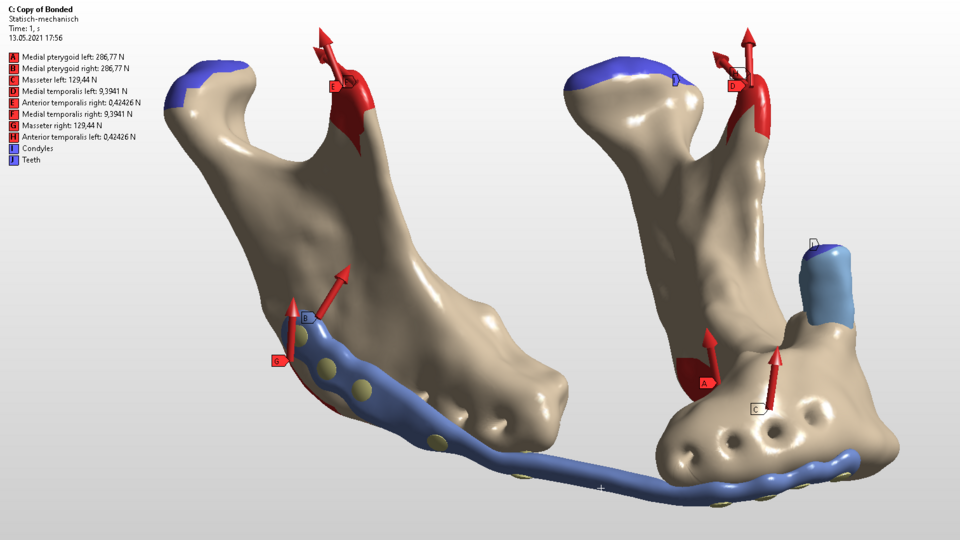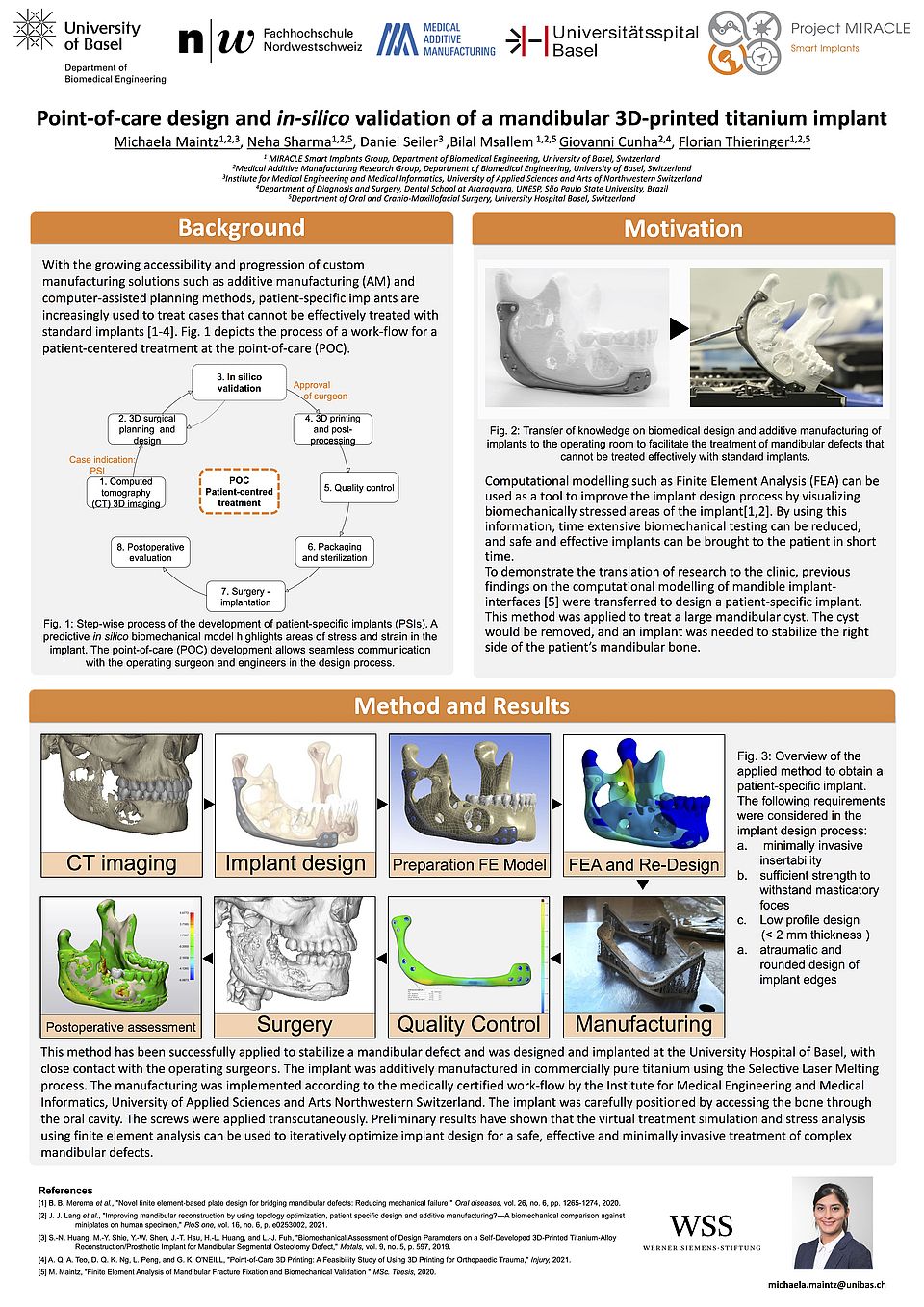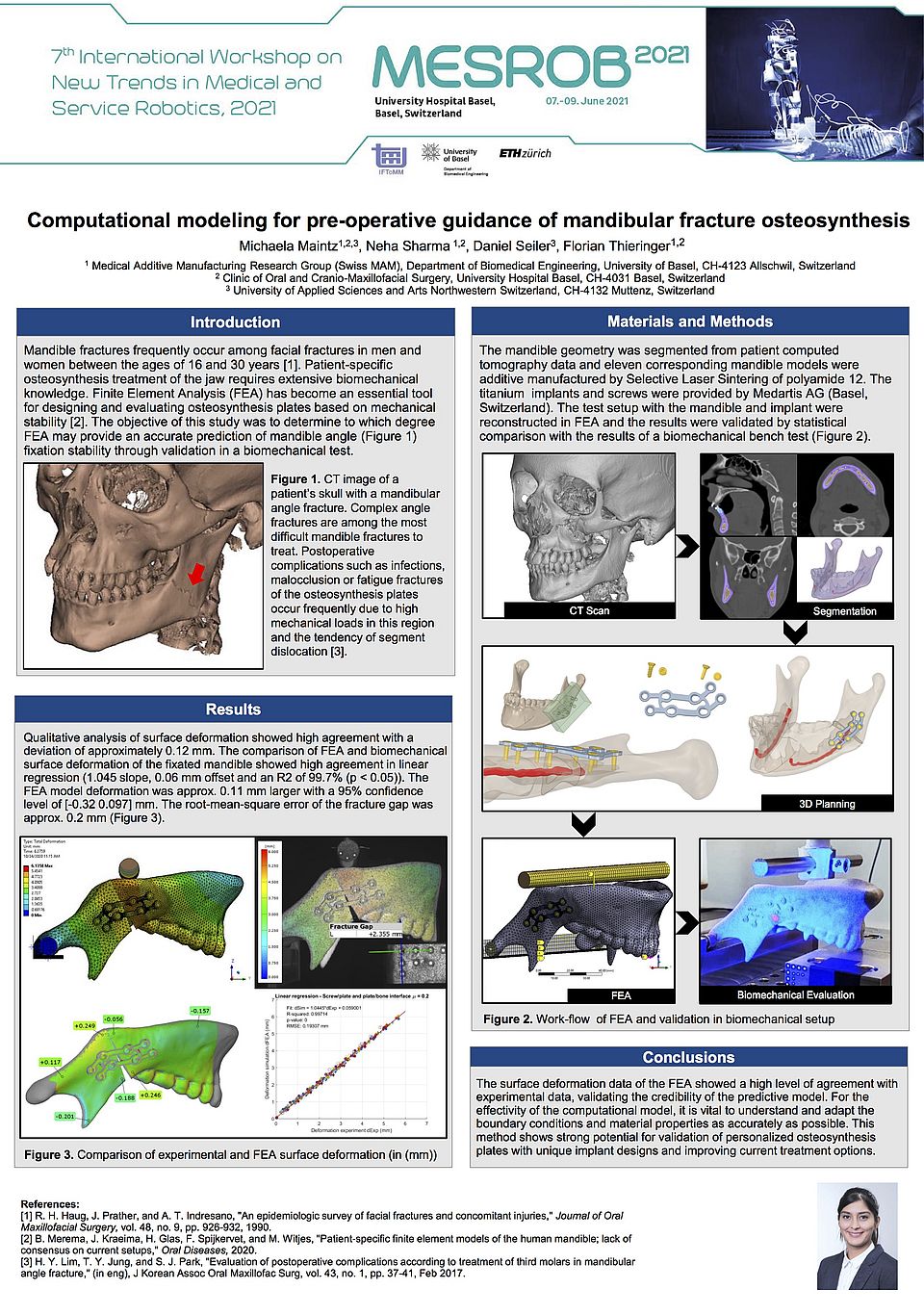Finite Element Analysis
Finite Element Analysis allows the simulation of implant-bone models subjected to biomechanical forces
Finite-Element (FE) analysis, a computational modelling tool allows the simulation of implant-bone models subjected to biomechanical forces. Using this technology, implant performance can be analyzed depending on the patient-specific case. Under consideration of material characteristics of the additive manufactured material, patient-specific implants can be optimized with nature-inspired optimization algorithms to withstand the physiological forces with a low-profile design to facilitate a less invasive surgery and an improved healing process. Finally, to reduce necessary biomechanical and clinical trials, validated FE analyses allow the fast, in silico, computational testing of implants before they are used to ultimately provide a new and improved, safe and effective treatment option to the patient.
The biomechanical forces of the mandibular bone are complex and the outcome is usually not known. To facilitate a less invasive surgery, fast healing of the fracture site and prevent stress shielding, the use of bulky, overengineered plates are to be avoided. However the surgical outcome often remains uncertain. FE models can aid in the process of predicting which regions of the designed implant require structural improvement of patient-specific implants. However, the re-iteration of the design process to obtain the optimal implant is tedious. A topology optimized implant design, produced by AM, evenly distributes mechanical loads throughout the bone-implant interface, preventing localized stress concentration, bone resorption and implant failure. The structural performance of the additive manufactured implants often remains unpredictable due to production-related directional variances in material strength by the build process. With extensive material characterization and knowledge, these variances can be incorporated into the implant design process. In literature, many optimized patient-specific implant concepts have been demonstrated . However, anisotropy is usually not considered and only a small number of FE models are validated in biomechanical tests. The validation of the model in biomechanical evaluations is crucial for the credibility of the results. In our research we not only focus on the design of the implants, we also validate these designs in biomechanical tests to estimate the efficacy of the in silico model.







